Baron-Cohen S., Leslie A. M. & Frith, U. (1985). Does the autistic child have a “theory of mind”. Cognition, 21(1), pp. 37-46;
Casey B. J., Craddock N., Cuthbert B. N., Hyman S. E., Lee F. S. & Ressler K. J. (2013). DSM-5 and RDoC: progress in psychiatry research?. Nature Reviews Neuroscience, 14(11), pp. 810-814;
Charney D. S., Buxbaum J. D., Sklar P. & Nestler E. J. (Eds.). (2013). Neurobiology of mental illness. Oxford University Press;
Cotter J., Granger K., Backx R., Hobbs M., Looi C. Y. & Barnett J. H. (2018). Social cognitive dysfunction as a clinical marker: a systematic review of meta-analyses across 30 clinical conditions. Neuroscience & Biobehavioral Reviews, pp. 84, 92-99;
Cuthbert B. N. & Kozak M. J. (2013). Constructing constructs for psychopathology: the NIMH research domain criteria. Journal of abnormal psychology, 122(3), pp. 928-937;
Cuthbert B. N. & Insel T. R. (2013). Toward the future of psychiatric diagnosis: the seven pillars of RdoC. BMC medicine, 11(1), p. 126;
Cuthbert B. N. (2014). The RDoC framework: facilitating transition from ICD/DSM to dimensional approaches that integrate neuroscience and psychopathology. World Psychiatry, 13(1), pp. 28-35;
Decety J., & Jackson P. L. (2004). The functional architecture of human empathy. Behavioral and cognitive neuroscience reviews, 3(2), pp. 71-100;
de Waal F. B. (2008). Putting the altruism back into altruism: the evolution of empathy. Annual review of psychology, pp. 59, p. 279;
Faucher L. & Goyer S. (2015). RDoC: Thinking outside the DSM box without falling into a reductionist trap. In The DSM-5 in perspective (pp. 199-224). Springer, Dordrecht;
Gallese V. (2007). Before and below ‘theory of mind’: embodied simulation and the neural correlates of social cognition. Philosophical Transactions of the Royal Society B: Biological Sciences, 362(1480), pp. 659-669;
Harrison L. A., Kats, A. Williams M. E. & Aziz-Zadeh L. (2019). The importance of sensory processing in mental health: A proposed addition to the Research Domain Criteria (RDoC) and suggestions for RDoC 2.0. Frontiers in psychology, 10, p. 103;
Hoffman G.A. and Zachar P. (2017) RDoC’s Metaphysical Assumptions: Problems and Promises.” In Extraordinary Science: Responding to the Current Crisis in Psychiatric Research, ed. Jeffrey Poland, and Şerife Tekin, pp. 59-86. Cambridge: MIT Press;
Hyman S. E. (2007). Can neuroscience be integrated into the DSM-V?. Nature Reviews Neuroscience, 8(9), 725-732;
Hyman S. E. (2010). The diagnosis of mental disorders: the problem of reification. Annual review of clinical psychology, 6, pp. 155-179; National Institute of Mental Health (NIMH)
Insel T., Cuthbert B., Garvey M., Heinssen R., Pine D. S., Quinn K. … & Wang P. (2010). Research domain criteria (RDoC): toward a new classification framework for research on mental disorders;
Lake J., Yee C. & Miller G. Misunderstanding RDoC. Zeitschrift für Psychologie, 225(3), pp. 170-174;
London E. B. (2014). Categorical diagnosis: a fatal flaw for autism research?. Trends in neurosciences, 37(12), pp. 683-686;
Koudys J. W., Traynor J. M., Rodrigo A. H., Carcone D. & Ruocco A. C. (2019). The NIMH Research Domain Criteria (RDoC) initiative and its implications for research on personality disorder. Current psychiatry reports, 21(6), p. 37.
Lilienfeld S. O. & Treadway M. T. (2016). Clashing diagnostic approaches: DSM-ICD versus RDoC. Annual review of clinical psychology, 12, pp. 435-463;
Mitchell R. L. & Phillips L. H. (2015). The overlapping relationship between emotion perception and theory of mind. Neuropsychologia, 70, pp. 1-10;
Molenberghs P., Johnson H., Henry J. D. & Mattingley J. B. (2016). Understanding the minds of others: A neuroimaging meta-analysis. Neuroscience & Biobehavioral Reviews, 65, pp. 276-291;
Morris S. E. & Cuthbert B. N. (2012). Research Domain Criteria: cognitive systems, neural circuits, and dimensions of behavior. Dialogues in clinical neuroscience, 14(1), p. 29;
Nesse R. M. & Stein D. J. (2012). Towards a genuinely medical model for psychiatric nosology. BMC medicine, 10(1), p. 5;
National Institute of Mental Health (NIMH) (2019) https://www.nimh.nih.gov/research/research-funded-by-nimh/rdoc/about-rdoc.shtml;
Premack D. & Woodruff G. (1978). Does the chimpanzee have a theory of mind?. Behavioral and brain sciences, 1(4), pp. 515-526;
Stanislow C., Morris S., Pacheco J., Cuthbert B. (2020). The National Institute of Mental Health Research Domain Criteria: an alternative framework to guide psychopathology research. In Geddes J. R. & Andreasen N. C. (2020). New Oxford textbook of psychiatry. Oxford University Press, USA, pp. 62-73;
Stueber, Karsten, “Empathy”, The Stanford Encyclopedia of Philosophy (Fall 2019 Edition), Edward N. Zalta (ed.), URL = <https://plato.stanford.edu/archives/fall2019/entries/empathy/>;
Tabb, K. (2015). Psychiatric progress and the assumption of diagnostic discrimination. Philosophy of Science, 82(5), pp. 1047-1058;
Tomasello M. & Moll H. (2013). Why don’t apes understand false beliefs? In MR Banaji & SA Gelman (Eds.), Navigating the social world: What infants, children, and other species can teach us (pp. 81-88). Oxford [ua]: Oxford Univ;
Tsou J. Y. (2015). DSM-5 and psychiatry’s second revolution: Descriptive vs. theoretical approaches to psychiatric classification. In The DSM-5 in perspective (pp. 43-62). Springer, Dordrecht;
Walther S., Bernard J. A., Mittal V. A. & Shankman S. A. (2019). The utility of an RDoC motor domain to understand psychomotor symptoms in depression. Psychological medicine, 49(2), pp. 212-216;
Wellman H. M. & Liu D. (2004). Scaling of theory-of-mind tasks. Child development, 75(2), pp. 523-541;
World Health Organization (WHO) (2018). International classification of diseases for mortality and morbidity statistics (11th Revision). Retrieved from https://icd.who.int/browse11/l-m/en;
Yee C. M., Javitt D. C. & Miller G. A. (2015). Replacing DSM categorical analyses with dimensional analyses in psychiatry research: the research domain criteria initiative. JAMA psychiatry, 72(12), pp. 1159-1160;
Zachar P., Stoyanov D. S., Aragona M. & Jablensky A. (Eds.). (2014). Alternative perspectives on psychiatric validation: DSM, ICD, RDoC, and beyond. OUP Oxford;
Adrian J. E., Clemente R. A., Villanueva L. & Rieffe C. (2005). Parent-child picture-book reading, mothers’ mental state language and children’s theory of mind. J Child Lang 32, pp. 673-86;
Amodio D. M. & Frith C. D. (2006). Meeting of minds: the medial frontal cortex and social cognition. Nat Rev Neurosci 7, pp. 268-77;
Arntz A., Bernstein D., Oorschot M. & Schobre P. (2009). Theory of mind in borderline and cluster-C personality disorder. J Nerv Ment Dis 197, pp. 801-7.
Backasch B., Straube B., Pyka M., Klohn-Saghatolislam F., Muller M. J., Kircher T. T. & Leube D. T. (2013). Hyperintentionality during automatic perception of naturalistic cooperative behavior in patients with schizophrenia. Soc Neurosci 8, pp. 489-504;
Baron-Cohen S., O’Riordan M., Stone V., Jones R. & Plaisted K. (1999). Recognition of faux pas by normally developing children and children with Asperger syndrome or high-functioning autism. J Autism Dev Disord 29, pp. 407-18;
Baron-Cohen S., Wheelwright S., Hill J., Raste Y. & Plumb I. (2001). The “Reading the Mind in the Eyes” Test revised version: a study with normal adults, and adults with Asperger syndrome or high-functioning autism. J Child Psychol Psychiatry 42, pp. 241-51;
Barrera A., Vazquez G., Tannenhaus L., Lolich M. & Herbst L. (2013). Theory of mind and functionality in bipolar patients with symptomatic remission. Rev Psiquiatr Salud Ment 6, pp. 67-74;
Benedetti F., Bernasconi A., Bosia M., Cavallaro R., Dallaspezia S., Falini A., Poletti S., Radaelli D., Riccaboni R., Scotti G. & Smeraldi E. (2009). Functional and structural brain correlates of theory of mind and empathy deficits in schizophrenia. Schizophr Res 114, pp. 154-60;
Bora E. (2009). [Theory of mind in schizophrenia spectrum disorders]. Turk Psikiyatri Derg 20, pp. 269-81;
Bora, E., Bartholomeusz, C. & Pantelis, C. (2016). Meta-analysis of Theory of Mind (ToM) impairment in bipolar disorder. Psychol Med 46, pp. 253-64;
Bora E. & Berk M. (2016). Theory of mind in major depressive disorder: A meta-analysis. J Affect Disord 191, pp. 49-55;
Bora E. & Pantelis C. (2016). Social cognition in schizophrenia in comparison to bipolar disorder: A meta-analysis. Schizophr Res 175, pp. 72-78;
Bosia M., Riccaboni R. & Poletti S. (2012). Neurofunctional correlates of theory of mind deficits in schizophrenia. Curr Top Med Chem 12, pp. 2284-302;
Brothers L. & Ring B. (1992). A neuroethological framework for the representation of minds. J Cogn Neurosci 4, pp. 107-18;
Brune M., Lissek S., Fuchs N., Witthaus H., Peters S., Nicolas V., Juckel G. & Tegenthoff M. (2008). An fMRI study of theory of mind in schizophrenic patients with “passivity” symptoms. Neuropsychologia 46, pp. 1992-2001;
Brunet E., Sarfati Y., Hardy-Bayle M. C. & Decety J. (2003). Abnormalities of brain function during a nonverbal theory of mind task in schizophrenia. Neuropsychologia 41, pp. 1574-82;
Callicott J. H., Bertolino A., Mattay V. S., Langheim F. J., Duyn J., Coppola R., Goldberg T. E. & Weinberger D. R. (2000). Physiological dysfunction of the dorsolateral prefrontal cortex in schizophrenia revisited. Cereb Cortex 10, pp. 1078-92;
Cavanna A. E. & Trimble M. R. (2006). The precuneus: a review of its functional anatomy and behavioural correlates. Brain 129, pp. 564-83;
Ciaramidaro A., Bolte, S., Schlitt S., Hainz D., Poustka F., Weber B., Bara B. G., Freitag C. & Walter H. (2015). Schizophrenia and autism as contrasting minds: neural evidence for the hypo-hyper-intentionality hypothesis. Schizophr Bull 41, pp. 171-9;
Corcoran R., Cahill C. & Frith C. D. (1997). The appreciation of visual jokes in people with schizophrenia: a study of ‘mentalizing’ ability. Schizophr Res 24, pp. 319-27;
Cotter J., Granger K., Backx R., Hobbs M., Looi C. Y. & Barnett J. H. (2018). Social cognitive dysfunction as a clinical marker: A systematic review of meta-analyses across 30 clinical conditions. Neurosci Biobehav Rev 84, pp. 92-99;
Cuthbert B. N. & Insel T. R. (2013). Toward the future of psychiatric diagnosis: the seven pillars of RDoC. BMC Med 11, p. 126;
Dapretto M., Davies M. S., Pfeifer J. H., Scott A. A., Sigman M., Bookheimer S. Y. & Iacoboni M. (2006). Understanding emotions in others: mirror neuron dysfunction in children with autism spectrum disorders. Nat Neurosci 9, pp. 28-30;
Davidson C. A., Piskulic D., Addington J., Cadenhead K. S., Cannon T. D., Cornblatt B. A., McGlashan T. H., Perkins D. O., Seidman L. J., Tsuang M. T., Walker E. F., Bearden C. E., Mathalon D. H., Woods S. W. & Johannesen J. K. (2018). Age-related trajectories of social cognition in youth at clinical high risk for psychosis: An exploratory study. Schizophr Res 201, pp. 130-136;
Domes G., Schulze L. & Herpertz S. C. (2009). Emotion recognition in borderline personality disorder-a review of the literature. J Pers Disord 23, pp. 6-19;
Donegan N. H., Sanislow C. A., Blumberg H. P., Fulbright R. K., Lacadie C., Skudlarski P., Gore J. C., Olson I. R., McGlashan T. H. & Wexler B. E. (2003). Amygdala hyperreactivity in borderline personality disorder: implications for emotional dysregulation. Biol Psychiatry 54, pp. 1284-93;
Dziobek I., Preissler S., Grozdanovic Z., Heuser I., Heekeren H. R. & Roepke S. (2011). Neuronal correlates of altered empathy and social cognition in borderline personality disorder. Neuroimage 57, pp. 539-48;
Farrow T. F., Whitford T. J., Williams L. M., Gomes L. & Harris A. W. (2005). Diagnosis-related regional gray matter loss over two years in first episode schizophrenia and bipolar disorder. Biol Psychiatry 58, pp. 713-23;
Fertuck E. A., Jekal A., Song I., Wyman B., Morris M. C., Wilson S. T., Brodsky B. S. & Stanley B. (2009). Enhanced ‘Reading the Mind in the Eyes’ in borderline personality disorder compared to healthy controls. Psychol Med 39, pp. 1979-88;
Fett A. K., Viechtbauer W., Dominguez M. D., Penn D. L., van Os J. & Krabbendam L. (2011). The relationship between neurocognition and social cognition with functional outcomes in schizophrenia: a meta-analysis. Neurosci Biobehav Rev 35, pp. 573-88;
Fonagy P. & Target M. (1996). Playing with reality: I. Theory of mind and the normal development of psychic reality. Int J Psychoanal 77 ( Pt 2), pp. 217-33;
Franzen N., Hagenhoff M., Baer N., Schmidt A., Mier D., Sammer G., Gallhofer B., Kirsch, P. & Lis S. (2011). Superior ‘theory of mind’ in borderline personality disorder: an analysis of interaction behavior in a virtual trust game. Psychiatry Res 187, pp. 224-33;
Frick C., Lang S., Kotchoubey B., Sieswerda S., Dinu-Biringer R., Berger M., Veser S., Essig M. & Barnow S. (2012). Hypersensitivity in borderline personality disorder during mindreading. PLoS One 7, e41650.
Frith C. D. & Frith U. (2007). Social cognition in humans. Curr Biol 17, R724-32.
Ghiassi V., Dimaggio G. & Brune M. (2010). Dysfunctions in understanding other minds in borderline personality disorder: a study using cartoon picture stories. Psychother Res 20, pp. 657-67;
Greig T. C., Bryson G. J. & Bell M. D. (2004). Theory of mind performance in schizophrenia: diagnostic, symptom, and neuropsychological correlates. J Nerv Ment Dis 192, pp. 12-8;
Gross & Harris (1988). False Beliefs About Emotion: Children’s Understanding of Misleading Emotional Displays. International Journal of Behavioral Development, pp. 475-488;
Happe F. G. (1994). An advanced test of theory of mind: understanding of story characters’ thoughts and feelings by able autistic, mentally handicapped, and normal children and adults. J Autism Dev Disord 24, pp. 129-54;
Herold R., Tenyi T., Lenard K. & Trixler M. (2002). Theory of mind deficit in people with schizophrenia during remission. Psychol Med 32, pp. 1125-9;
Herpertz S. C. & Bertsch K. (2014). The social-cognitive basis of personality disorders. Curr Opin Psychiatry 27, pp. 73-7;
Hershenberg R. & Goldfried M. R. (2015). Implications of RDoC for the research and practice of psychotherapy. Behavior Therapy, 46(2), pp. 156-165.
Hibar D. P., Westlye L. T., Doan N. T., Jahanshad N., Cheung J. W., Ching C. R. K., Versace A., Bilderbeck A. C., Uhlmann A., Mwangi B., Kramer B., Overs B., Hartberg C. B., Abe C., Dima D., Grotegerd D., Sprooten E., Boen E., Jimenez E., Howells F. M., Delvecchio G., Temmingh H., Starke J., Almeida J. R. C., Goikolea J. M., Houenou J., Beard L. M., Rauer L., Abramovic L., Bonnin M., Ponteduro M. F., Keil M., Rive M. M., Yao N., Yalin N., Najt P., Rosa P. G., Redlich R., Trost S., Hagenaars S., Fears S. C., Alonso-Lana S., van Erp T. G. M., Nickson T., Chaim-Avancini T. M., Meier T. B., Elvsashagen T., Haukvik U. K., Lee W. H., Schene A. H., Lloyd A. J., Young A. H., Nugent A., Dale A. M., Pfennig A., McIntosh A. M., Lafer B., Baune B. T., Ekman C. J., Zarate C. A., Bearden C. E., Henry C., Simhandl C., McDonald C., Bourne C., Stein D. J., Wolf D. H., Cannon D. M., Glahn D. C., Veltman D. J., Pomarol-Clotet E., Vieta, E., Canales-Rodriguez E. J., Nery F. G., Duran F. L. S., Busatto G. F., Roberts G., Pearlson G. D., Goodwin G. M., Kugel H., Whalley H. C., Ruhe H. G., Soares J. C., Fullerton J. M., Rybakowski J. K., Savitz J., Chaim K. T., Fatjo-Vilas M., Soeiro-de-Souza M. G., Boks M. P., Zanetti M. V., Otaduy M. C. G., Schaufelberger M. S., Alda M., Ingvar M., Phillips M. L., Kempton M. J., Bauer M., Landen M., Lawrence N. S., van Haren N. E. M., Horn N. R., Freimer N. B., Gruber O., Schofield P. R., Mitchell P. B., Kahn R. S., Lenroot R., Machado-Vieira R., Ophoff R. A., Sarro S., Frangou S., Satterthwaite T. D., Hajek T., Dannlowski U., Malt U. F., Arolt V., Gattaz W. F., Drevets W. C., Caseras X., Agartz I., Thompson P. M. & Andreassen O. A. (2018). Cortical abnormalities in bipolar disorder: an MRI analysis of 6503 individuals from the ENIGMA Bipolar Disorder Working Group. Mol Psychiatry 23, pp. 932-942;
Hibar D. P., Westlye L. T., van Erp T. G., Rasmussen J., Leonardo C. D., Faskowitz J., Haukvik U. K., Hartberg C. B., Doan N. T., Agartz I., Dale A. M., Gruber O., Kramer B., Trost S., Liberg B., Abe C., Ekman C. J., Ingvar M., Landen M., Fears S. C., Freimer N. B., Bearden C. E., Costa Rica/Colombia Consortium for Genetic Investigation of Bipolar, Sprooten E., Glahn D. C., Pearlson G. D., Emsell L., Kenney J., Scanlon C., McDonald C., Cannon D. M., Almeida J., Versace A., Caseras X., Lawrence N. S., Phillips M. L., Dima D., Delvecchio G., Frangou S., Satterthwaite T. D., Wolf D., Houenou J., Henry C., Malt U. F., Boen E., Elvsashagen T., Young A. H., Lloyd A. J., Goodwin G. M., Mackay C. E., Bourne C., Bilderbeck A., Abramovic L., Boks M. P., van Haren N. E., Ophoff R. A., Kahn R. S., Bauer M., Pfennig A., Alda M., Hajek T., Mwangi B., Soares J. C., Nickson T., Dimitrova R., Sussmann J. E., Hagenaars S., Whalley H. C., McIntosh A. M., Thompson P. M. & Andreassen O. A. (2016). Subcortical volumetric abnormalities in bipolar disorder. Mol Psychiatry 21, pp. 1710-1716;
Horan W. P., Nuechterlein K. H., Wynn J. K., Lee J., Castelli F. & Green M. F. (2009). Disturbances in the spontaneous attribution of social meaning in schizophrenia. Psychol Med 39, pp. 635-43;
Hyman S. E. (2007). Can neuroscience be integrated into the DSM-V? Nat Rev Neurosci 8, pp. 725-32;
Hyman S. E. (2010). The diagnosis of mental disorders: the problem of reification. Annu Rev Clin Psychol 6, pp. 155-79;
Inoue Y., Yamada K., Hirano M., Shinohara M., Tamaoki T., Iguchi H., Tonooka Y. & Kanba S. (2006). Impairment of theory of mind in patients in remission following first episode of schizophrenia. Eur Arch Psychiatry Clin Neurosci p. 256, pp. 326-8;
Insel T., Cuthbert B., Garvey M., Heinssen R., Pine D. S., Quinn K., Sanislow C. & Wang P. (2010). Research domain criteria (RDoC): toward a new classification framework for research on mental disorders. Am J Psychiatry p. 167, pp. 748-51;
Kelemen O., Erdelyi R., Pataki I., Benedek G., Janka Z. & Keri S. (2005). Theory of mind and motion perception in schizophrenia. Neuropsychology 19, pp. 494-500;
Kendell R. & Jablensky A. (2003). Distinguishing between the validity and utility of psychiatric diagnoses. Am J Psychiatry 160, pp. 4-12;
Kern R. S., Green M. F., Fiske A. P., Kee K. S., Lee J., Sergi M. J., Horan W. P., Subotnik K. L., Sugar C. A. & Nuechterlein K. H. (2009). Theory of mind deficits for processing counterfactual information in persons with chronic schizophrenia. Psychol Med 39, pp. 645-54;
Kington J. M., Jones L. A., Watt A. A., Hopkin E. J. & Williams J. (2000). Impaired eye expression recognition in schizophrenia. J Psychiatr Res 34, pp. 341-7;
Kohler C. G., Hoffman L. J., Eastman L. B., Healey K. & Moberg P. J. (2011). Facial emotion perception in depression and bipolar disorder: a quantitative review. Psychiatry Res 188, p. 3039;
Kohler C. G., Walker J. B., Martin E. A., Healey K. M. & Moberg P. J. (2010). Facial emotion perception in schizophrenia: a meta-analytic review. Schizophr Bull 36, pp. 1009-19;
Kronbichler L., Tschernegg M., Martin A. I., Schurz M. & Kronbichler M. (2017). Abnormal Brain Activation During Theory of Mind Tasks in Schizophrenia: A Meta-Analysis. Schizophr Bull 43, pp. 1240-1250;
Lahera G., Benito A. Montes J. M., Fernandez-Liria A., Olbert C. M. & Penn D. L. (2013). Social cognition and interaction training (SCIT) for outpatients with bipolar disorder. J Affect Disord 146, pp. 132-6;
Lazarus S. A., Cheavens J. S., Festa F. & Zachary Rosenthal M. (2014). Interpersonal functioning in borderline personality disorder: a systematic review of behavioral and laboratory-based assessments. Clin Psychol Rev 34, pp. 193-205;
Leppanen J., Sedgewick F., Treasure J. & Tchanturia K. (2018). Differences in the Theory of Mind profiles of patients with anorexia nervosa and individuals on the autism spectrum: A meta-analytic review. Neurosci Biobehav Rev 90, pp. 146-163;
Leslie A. M. & Keeble S. (1987). Do six-month-old infants perceive causality? Cognition 25, pp. 265-88;
Malhi G. S., Lagopoulos J., Das P., Moss K., Berk M. & Coulston C. M. (2008). A functional MRI study of Theory of Mind in euthymic bipolar disorder patients. Bipolar Disord 10, pp. 943-56;
Mar R. A. (2011). The neural bases of social cognition and story comprehension. Annu Rev Psychol 62, pp. 103-34;
Martin A. K., Robinson G., Dzafic I., Reutens D. & Mowry B. (2014). Theory of mind and the social brain: implications for understanding the genetic basis of schizophrenia. Genes Brain Behav 13, pp. 104-17;
Meristo M., Falkman K. W., Hjelmquist E., Tedoldi M., Surian L. & Siegal M. (2007). Language access and theory of mind reasoning: evidence from deaf children in bilingual and oralist environments. Dev Psychol 43, pp. 1156-69;
Mier D., Lis S., Esslinger C., Sauer C., Hagenhoff M., Ulferts J., Gallhofer B. & Kirsch P. (2013). Neuronal correlates of social cognition in borderline personality disorder. Soc Cogn Affect Neurosci 8, pp. 531-7;
Milders M., Ietswaart M., Crawford J. R. & Currie D. (2006). Impairments in theory of mind shortly after traumatic brain injury and at 1-year follow-up. Neuropsychology 20, pp. 400-408;
Milligan K., Astington J. W. & Dack L. A. (2007). Language and theory of mind: meta-analysis of the relation between language ability and false-belief understanding. Child Dev 78, pp. 622-46;
Minzenberg M. J., Fan J., New A. S., Tang C. Y. & Siever L. J. (2007). Fronto-limbic dysfunction in response to facial emotion in borderline personality disorder: an event-related fMRI study. Psychiatry Res 155, pp. 231-43;
Mitchell A. E., Dickens G. L. & Picchioni M. M. (2014). Facial emotion processing in borderline personality disorder: a systematic review and meta-analysis. Neuropsychol Rev 24, pp. 166-84;
Mitchell R. L. & Young A. H. (2015). Theory of Mind in Bipolar Disorder, with Comparison to the Impairments Observed in Schizophrenia. Front Psychiatry 6, pp. 188;
Mo S., Su Y., Chan R. C. & Liu J. (2008). Comprehension of metaphor and irony in schizophrenia during remission: the role of theory of mind and IQ. Psychiatry Res 157, pp. 21-9;
Moriguchi Y. (2014). The early development of executive function and its relation to social interaction: a brief review. Front Psychol 5, p. 388;
Moses S. N., Ostreicher M. L. & Ryan J. D. (2010). Relational framework improves transitive inference across age groups. Psychol Res 74, pp. 207-18;
Murphy D. (2006). Theory of mind in Asperger’s syndrome, schizophrenia and personality disordered forensic patients. Cogn Neuropsychiatry 11, pp. 99-111;
Nemeth N., Matrai P., Hegyi P., Czeh B., Czopf L., Hussain A., Pammer J., Szabo I., Solymar M., Kiss L., Hartmann P., Szilagyi A. L., Kiss Z. & Simon M. (2018). Theory of mind disturbances in borderline personality disorder: A meta-analysis. Psychiatry Res 270, pp. 143-153;
Perner J. & Davies G. (1991). Understanding the mind as an active information processor: do young children have a “copy theory of mind”? Cognition 39, pp. 51-69;
Perner J., Mauer M. C. & Hildenbrand M. (2011). Identity: key to children’s understanding of belief. Science 333, pp. 474-7;
Perner J. & Winner H. (1985). John thinks that Mary thinks that…” attribution of second-order beliefs by 5- to 10-year-old children. Journal of Experimental Child Psychology 39;
Povinelli D. J. (1993). Reconstructing the evolution of mind. Am Psychol 48, 493-509;
Purcell A. L., Phillips M. & Gruber J. (2013). In your eyes: does theory of mind predict impaired life functioning in bipolar disorder? J Affect Disord 151, pp. 1113-9;
Ruocco A. C., Amirthavasagam S., Choi-Kain L. W. & McMain S. F. (2013). Neural correlates of negative emotionality in borderline personality disorder: an activation-likelihood-estimation meta-analysis. Biol Psychiatry 73, pp. 153-60;
Samson D., Apperly I. A. & Humphreys G. W. (2007). Error analyses reveal contrasting deficits in “theory of mind”: neuropsychological evidence from a 3-option false belief task. Neuropsychologia 45, pp. 2561-9;
Sanislow C. A., Pine D. S., Quinn K. J., Kozak M. J., Garvey M. A., Heinssen R. K., Wang P. S. & Cuthbert B. N. (2010). Developing constructs for psychopathology research: research domain criteria. J Abnorm Psychol 119, pp. 631-9.
Saxe R. & Wexler A. (2005). Making sense of another mind: the role of the right temporo-parietal junction. Neuropsychologia 43, pp. 1391-9;
Schilling L., Wingenfeld K., Lowe B., Moritz S., Terfehr K., Kother U. & Spitzer C. (2012). Normal mind-reading capacity but higher response confidence in borderline personality disorder patients. Psychiatry Clin Neurosci 66, pp. 322-7;
Schurz M., Radua J., Aichhorn M., Richlan F. & Perner J. (2014). Fractionating theory of mind: a meta-analysis of functional brain imaging studies. Neurosci Biobehav Rev 42, pp. 9-34;
Scott L. N., Levy K. N., Adams R. B., Jr. & Stevenson M. T. (2011). Mental state decoding abilities in young adults with borderline personality disorder traits. Personal Disord 2, pp. 98-112;
Shamay-Tsoory S., Harari H., Szepsenwol O. & Levkovitz Y. (2009). Neuropsychological evidence of impaired cognitive empathy in euthymic bipolar disorder. J Neuropsychiatry Clin Neurosci 21, pp. 59-67;
Shamay-Tsoory S. G. (2011). The neural bases for empathy. Neuroscientist 17, pp. 18-24;
Shamay-Tsoory S. G., Shur S., Barcai-Goodman L., Medlovich S., Harari H. & Levkovitz Y. (2007). Dissociation of cognitive from affective components of theory of mind in schizophrenia. Psychiatry Res 149, pp. 11-23;
Sullivan Winner & Hopfield (1995). How children tell a lie from a joke: The role of second- order mental state attributions. Developmental Psychology, pp. 191–204;
Takahashi T., Wood S. J., Yung A. R., Soulsby B., McGorry P. D., Suzuki M., Kawasaki Y., Phillips L. J., Velakoulis D. & Pantelis C. (2009). Progressive gray matter reduction of the superior temporal gyrus during transition to psychosis. Arch Gen Psychiatry 66, pp. 366-76;
Thye M. D., Murdaugh D. L. & Kana R. K. (2018). Brain Mechanisms Underlying Reading the Mind from Eyes, Voice, and Actions. Neuroscience 374, pp. 172-186;
Unoka Z., Fogd D., Fuzy M. & Csukly G. (2011). Misreading the facial signs: specific impairments and error patterns in recognition of facial emotions with negative valence in borderline personality disorder. Psychiatry Res 189, pp. 419-25;
Van Overwalle F. & Baetens K. (2009). Understanding others’ actions and goals by mirror and mentalizing systems: a meta-analysis. Neuroimage 48, pp. 564-84;
Van Rheenen T. E., Meyer D. & Rossell S. L. (2014). Pathways between neurocognition, social cognition and emotion regulation in bipolar disorder. Acta Psychiatr Scand 130, pp. 397-405;
Vogeley K., Bussfeld P., Newen A., Herrmann S., Happe F., Falkai P., Maier W., Shah N. J., Fink G. R. & Zilles K. (2001). Mind reading: neural mechanisms of theory of mind and self-perspective. Neuroimage 14, pp. 170-81;
Walter H., Ciaramidaro A., Adenzato M., Vasic N., Ardito R. B., Erk S. & Bara B. G. (2009). Dysfunction of the social brain in schizophrenia is modulated by intention type: an fMRI study. Soc Cogn Affect Neurosci 4, pp. 166-76;
Wolf F., Brune M. & Assion H. J. (2010). Theory of mind and neurocognitive functioning in patients with bipolar disorder. Bipolar Disord 12, pp. 657-66.
 Northpix
Northpix Goff
Goff


 Reuters
Reuters
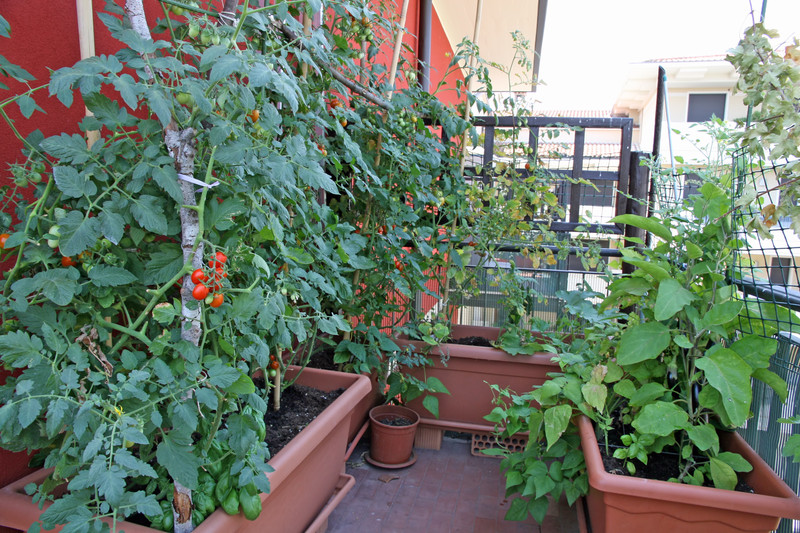
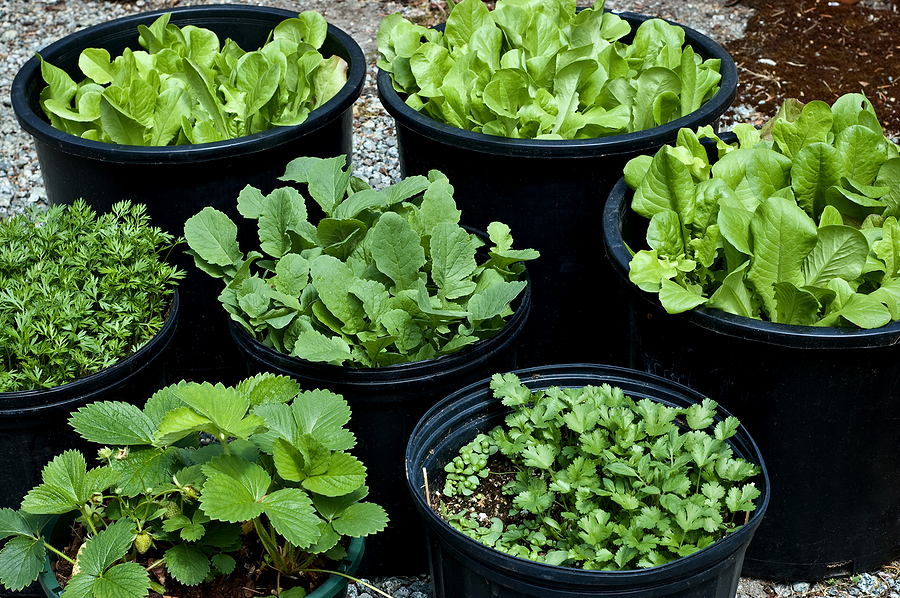
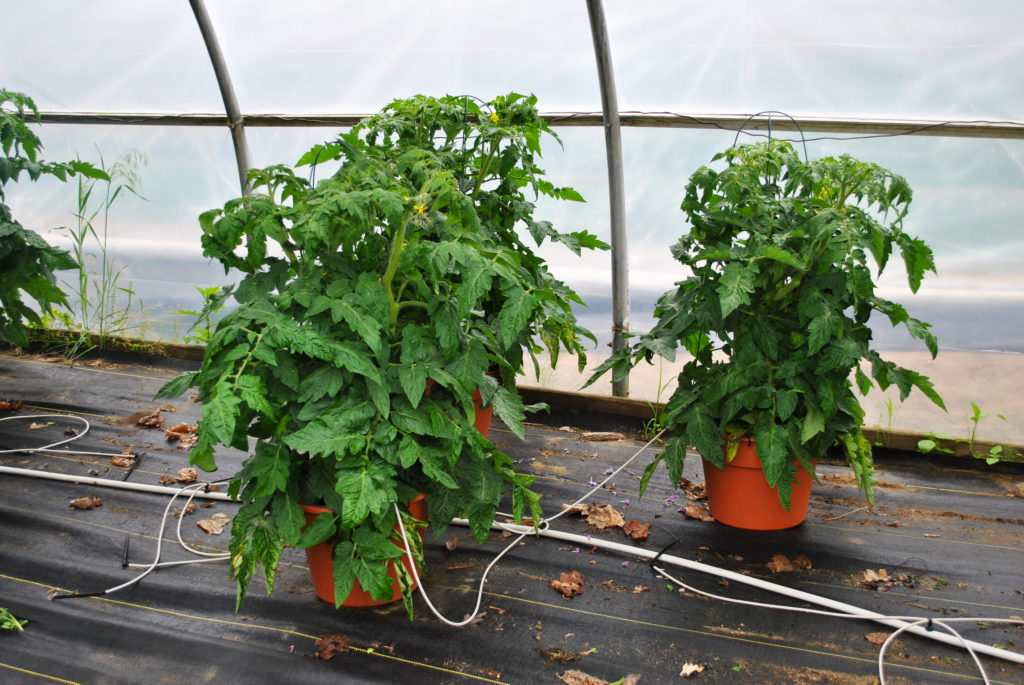
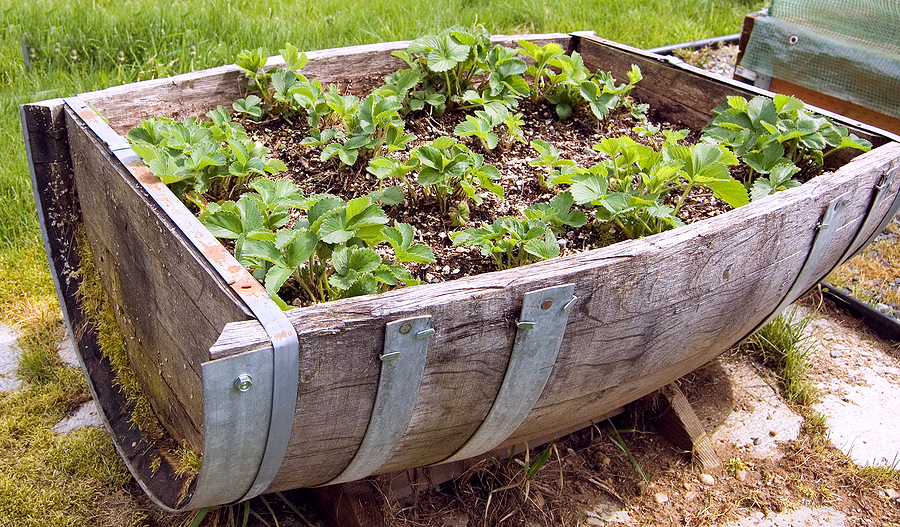






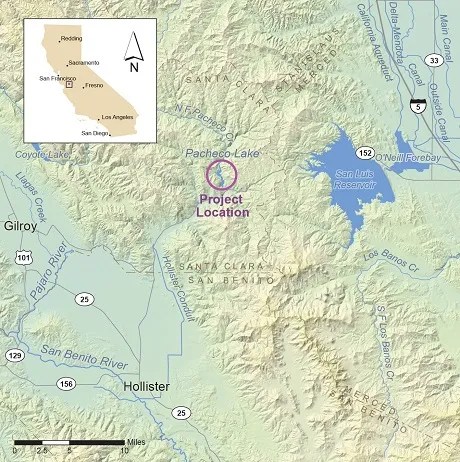



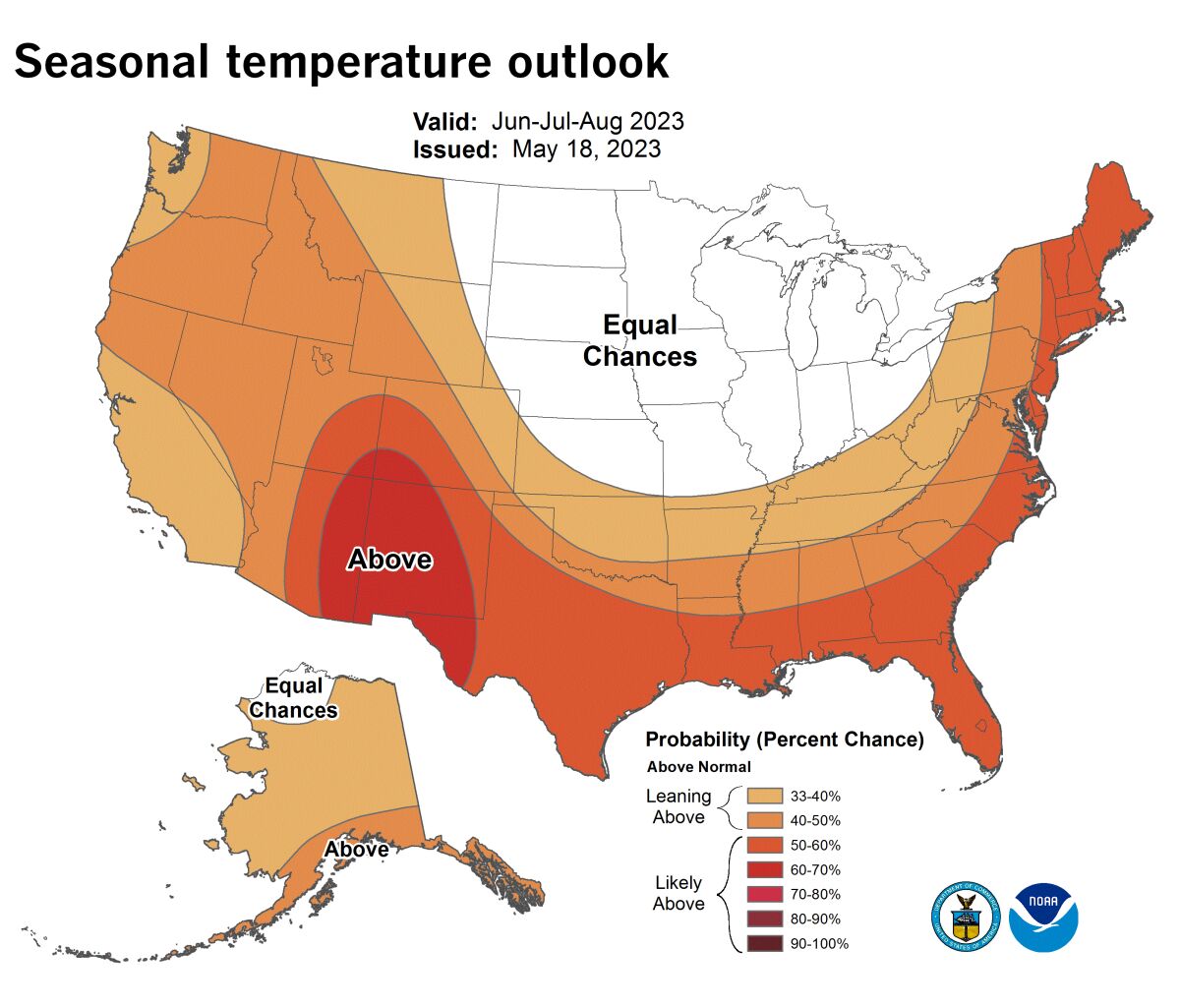 “Californians can expect hotter-than-average temperatures this summer. The National Oceanic and Atmospheric Administration (NOAA) predicts that the weather for June, July and August will be warmer than normal. The temperature map shows that in California, especially in northern parts of the state, there will be a 33% to 50% probability that temperatures will be above average. The rest of the U.S. — with the exception of a few Midwestern states — can also anticipate a warmer summer. The map is color-coded and the darker the color, the higher the likelihood that it’ll be hotter than normal. No portions of the country can expect below-normal summer temperatures. Meteorologists can’t say for certain why this summer will be hotter, but they suggest several factors can contribute. … ”
“Californians can expect hotter-than-average temperatures this summer. The National Oceanic and Atmospheric Administration (NOAA) predicts that the weather for June, July and August will be warmer than normal. The temperature map shows that in California, especially in northern parts of the state, there will be a 33% to 50% probability that temperatures will be above average. The rest of the U.S. — with the exception of a few Midwestern states — can also anticipate a warmer summer. The map is color-coded and the darker the color, the higher the likelihood that it’ll be hotter than normal. No portions of the country can expect below-normal summer temperatures. Meteorologists can’t say for certain why this summer will be hotter, but they suggest several factors can contribute. … ” 

